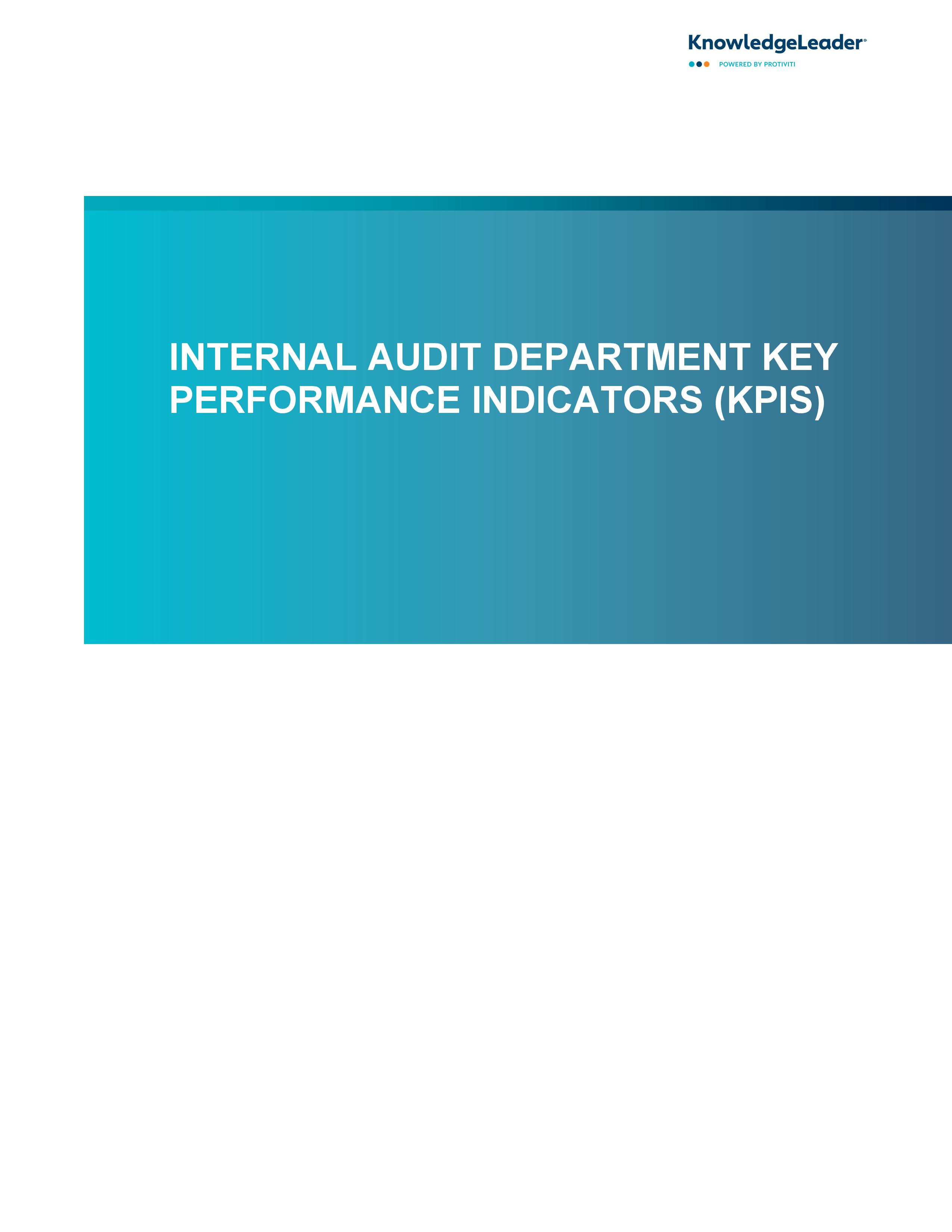Internal Audit Department Key Performance Indicators (KPIs)

A Comprehensive Guide to Evaluating the Performance of an Internal Audit Department
This benchmarking tool provides a comprehensive framework for evaluating the performance of an internal audit department using different metrics and indicators.
Key concepts discussed include developing effective communication strategies to drive management and employees to action. Metrics include monitoring the percentage of implemented recommendations within agreed-upon timelines, the frequency of surprises at exit meetings, report cycle times, and more. The concept of positioning internal audit as a change agent is also introduced with metrics like issues identified using facilitated sessions compared to traditional audit approaches.
The document also emphasizes integrating technology into the audit process to enhance efficiency and effectiveness. This can be measured by tracking factors such as average hours of EDP auditing training, utilization of standardized/automated tools, or ratio of microcomputers to auditors.
Furthermore, it delves into maximizing performance via a blend of audit and operational expertise, which includes measuring personnel skill levels, industry expertise among IA employees, number of requests for operational audits/process reviews, and more.
In addition to these topics, enhancing job satisfaction within the audit staff is considered crucial for improving delivery quality. Metrics suggested in this area include employee satisfaction survey results, turnover rate and advancement rates within the audit function.
The document also covers continuous improvement efforts involving internal and external quality assurance programs. Details about stakeholder feedback are given due importance, with metrics like the average score on client satisfaction surveys or the number of positive unsolicited comments received highlighted.
With its focus on all the integral parts of an effective internal audit department, this document serves as a thorough manual for organizations looking to measure their performance accurately across various parameters.